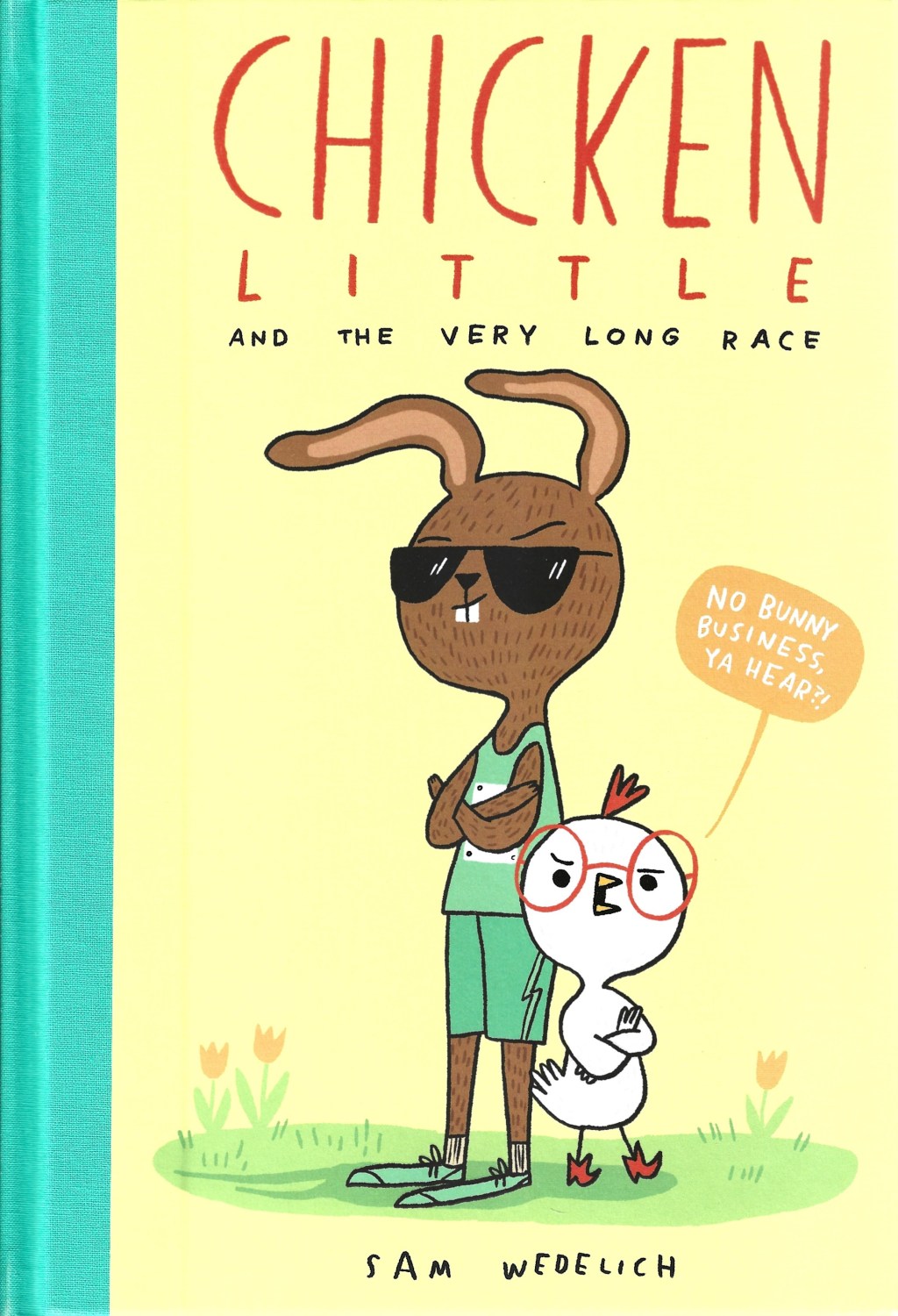
“Chicken Little and the Very Long Race,” written and illustrated by Sam Wedelich, will have kids smiling on every page. (Courtesy of Scholastic)
With the constant barrage of media both young and old are faced with every waking hour, it’s sometimes hard to keep focused.
Reading books that demonstrate the value of keeping our compass pointing it the right direction and staying on task is a great way to help kids think more intently on this important issue, such as the books reviewed today.
Books to borrow
The following book is available at many public libraries.
“His Name Was Raoul Wallenberg: Courage, Rescue, and Mystery During World War II” by Louise Borden, photos and illustrations various credits, Houghton Mifflin, 136 pages
Read aloud: age 10 – 11 and older.
Read yourself: age 11 – 12 and older.
As a little boy growing up in Stockholm, Sweden, in the early 1900s, Raoul Wallenberg was interested in everything. His curiosity was fostered by his family, and particularly his grandfather. And while Raoul came from a privileged family, he was intent on doing something useful with his life and make his mark in his own way.
Raoul traveled extensively, graduated from the University of Michigan with honors, spoke five languages fluently and was a good listener and influential speaker. During the final years of WWII, when Budapest and its thousands of Hungarian Jews were begging other countries for help, neutral Sweden requested that Raoul be Sweden’s diplomat to Hungary to try and save as many Jewish lives as possible. Raoul jumped at the opportunity and passionately threw himself into his mission.
Working against impossible odds, Wallenberg was very clever in his approach that ultimately saved tens of thousands of lives in Budapest. Sadly, Wallenberg’s fate is not wholly known, but his name and his acts of bravery should never be forgotten.
Borden has brought to light the boldness, courage and conviction of duty of this remarkable man, Raoul Wallenberg. An incredible story in every regard, this selection is a must read for older children and adults.
Librarian’s choice
Library: Southeast Branch Library, 1426 Perkiomen Ave., Reading
Executive library director: Melissa Adams
Assistant director: Emily McNulty
Choices this week: “Molly Moon’s Incredible Book of Hypnotism” by Georgia Byng; “Holes” by Louis Sachar; “Brave Irene” by William Steig
Books to buy
The following books are available at favorite bookstores.
“Chicken Little and the Very Long Race” written and illustrated by Sam Wedelich, Scholastic, 40 pages, $18.99 hardcover
Read aloud: age 4 – 8.
Read yourself: age 6 – 8.
When the marathon against local record holder Hare was announced on a large sign in the chicken yard, the chickens were very enthusiastic (except for Chicken Little). Chicken Little wasn’t interested in running or competing, and the announcement said the race was going to be very, very long.
All the other chickens began training right away, and when they went to get refreshments at the smoothie stand, Hare’s new book, “Hop to It! Hare’s Guide to Running,” was on sale there, and it specifically stated that smoothies were an essential part of the training process and stopped their training in lieu of smoothie consumption.
Chicken Little questioned the book’s advice, yet the other chickens believed every word Hare had written. Chicken Little knew that training was important to build stamina, and after being bullied into joining in the race, Chicken Little made a plan to focus on the task at hand and when the race finally began, it was “slow and steady” that would see Chicken Little through.
Reminiscent of the Aesop fable “The Tortoise and the Hare,” this very funny story will have kids smiling on every page.
“The Den That Octopus Built” by Randi Sonenshine, illustrated by Anne Hunter, Candlewick, 2024, 32 pages, $18.99 hardcover
Read aloud: age 4 – 8.
Read yourself: age 6 – 8.
The brilliant, clever and highly focused octopus is a master of her environment. She has many disguises as she builds her den, using objects she finds in her ocean home. When she hunts for prey, Octopus will use shells to cover her body like a coat of armor. She is also able to change her skin color and texture to appear to be something other than prey.
Octopus also has another way of helping to protect herself and survive by shooting a cloud of toxic, blinding black ink that confuses her enemy, and is then able to swim away at a remarkable speed and safely return to her den. And the den she has built is not only her home but the safe nursery where she lays her eggs, nurtures them with great care, and once hatched, sets them free from her den.
Boasting beautiful illustrations that perfectly complement the story, “The Den That Octopus Built” is a gentle introduction to the fascinating life cycle of an octopus. Informative back matter further rounds out the story of the highly intelligent, razor-sharp focused animal — the octopus.
Nationally syndicated, Kendal Rautzhan writes and lectures on children’s literature. She can be reached at kendal.rautzhan27@gmail.com.




